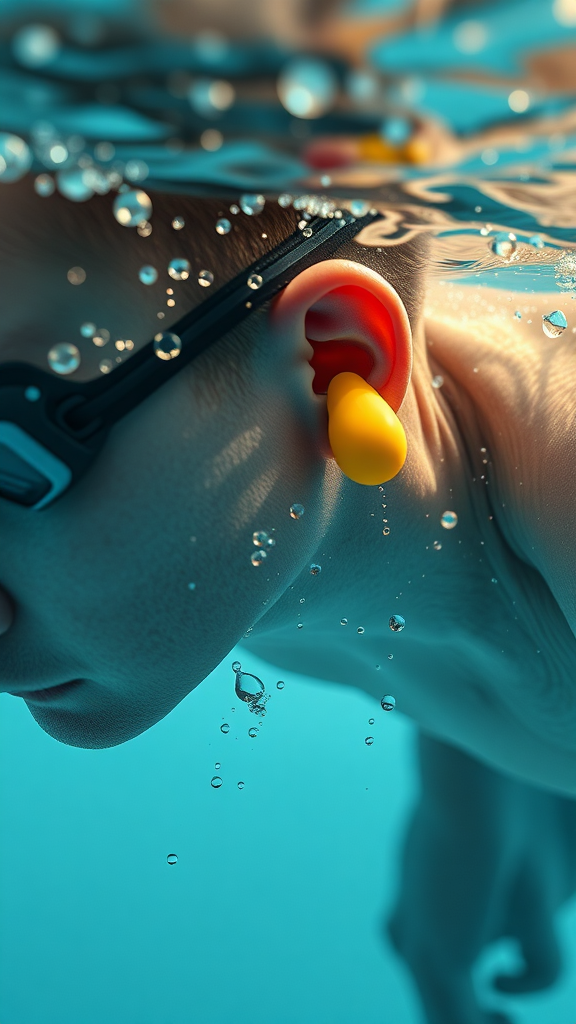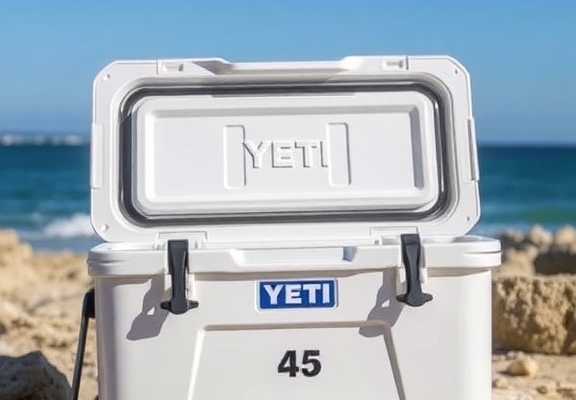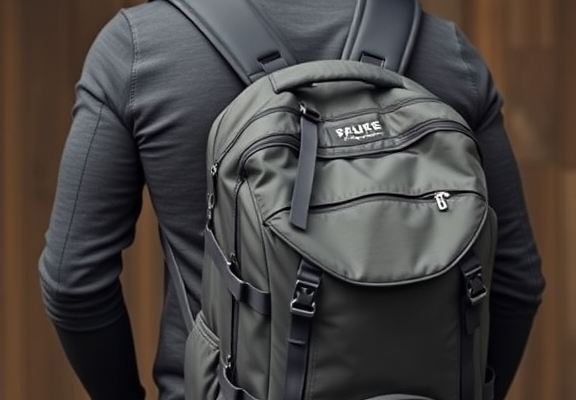✨ You’ve Discovered the Travel Gear Gold Mine
Find top-rated products to make your trip smoother—grab them before they’re gone!
🛒 Shop NowThe Benefits of Using Earplugs for Swimming: Protecting Your Hearing and Improving Comfort
Swimming is a fantastic way to stay fit, enjoy time with friends, and cool off during warm weather. However, it can also pose challenges to your ears, especially if you’re not using proper ear protection. That’s where earplugs specifically designed for swimming come into play. These little pieces of foam or silicone can offer significant advantages that enhance your overall swimming experience.
Thank you for reading this post, don't forget to subscribe!One major benefit of using earplugs while swimming is protecting your hearing. Water can easily enter the ear canal, leading to discomfort and even conditions like swimmer’s ear, which is an infection caused by water exposure. By wearing earplugs, you create a barrier that prevents water from getting inside your ears. This is especially important for frequent swimmers or those who spend long periods in the water.
Earplugs also help in reducing noise levels underwater. Whether you are swimming in a public pool or the ocean, noise from splashes, children playing, and other swimmers can be distracting. Using earplugs allows you to enjoy a quieter environment. This can help you focus better on your strokes and breathing, making your swim more enjoyable and efficient.
Another advantage is that earplugs can enhance comfort. For individuals sensitive to cold water, earplugs can provide a layer of insulation. This is beneficial during colder months or in chilly bodies of water, allowing you to swim for longer durations without discomfort. Additionally, earplugs can minimize the sensation of water pressure on your eardrums, which can be quite uncomfortable during dives or flips.
Choosing the right earplugs is crucial for maximizing these benefits. Here are a few types to consider:
- Foam Earplugs: These are soft and easy to insert. They provide a snug fit and are often disposable. They are a great option for casual swimmers.
- Silicone Earplugs: These mold to the shape of your ear, creating a secure seal. They are reusable, making them a cost-effective option for regular swimmers.
- Custom-Molded Earplugs: These are created from a mold of your ears, ensuring a perfect fit. While they may require a higher initial investment, they often provide the best comfort and effectiveness.
When choosing earplugs for swimming, fitting is key. If they don’t fit well, they might not protect your ears effectively and could even fall out while you swim. Make sure you test different types to find which ones you feel are the most comfortable and effective for your needs.
It’s also essential to maintain proper hygiene with your earplugs. Regular cleaning helps to remove bacteria and earwax that can accumulate, leading to potential ear infections. Follow the manufacturer’s instructions on how to clean and dry your earplugs before storing them away.
Using earplugs can significantly enhance your overall swimming experience. They not only protect your hearing but also improve your comfort levels in the water. Whether you are a casual swimmer or a competitive athlete, incorporating earplugs into your swimming routine can be a game changer.
In addition to the physical benefits, using earplugs can help create a more enjoyable mental experience while swimming. Instead of worrying about discomfort or potential ear infections, you can focus on your technique, breathing, and simply enjoying the water. This peace of mind can increase your motivation to swim more frequently and for longer periods.
It’s clear that earplugs for swimming are a valuable accessory. By protecting your ears from water, reducing noise, and enhancing comfort, they contribute to a more enjoyable swimming experience. So, if you want to swim with ease and confidence, consider adding a reliable pair of earplugs to your swimming gear today!
Remember, the key to enhancing your swimming experience lies not only in the right technique and stamina but also in taking care of your body, including your ears. Make earplugs a part of your essential swimming gear, and enjoy all the aquatic adventures that await you with greater confidence and comfort.
How to Choose the Right Type of Earplugs for Your Swimming Needs
Swimming is a fantastic way to enjoy the water, but for many, it comes with the downside of unwanted noise and water in the ears. That’s where earplugs come in handy. When selecting earplugs for swimming, various factors need careful consideration to ensure comfort and effectiveness. Here’s how to find the best earplugs for your swimming needs.
Understand Your Needs
The first step in choosing the right earplugs is to assess your specific needs. Are you a casual swimmer looking to block out noise, or are you a competitive swimmer needing to prevent water from entering your ears? Understanding your purpose will guide your decision.
- Casual Swimmers: If you swim occasionally, focus on earplugs that provide basic noise reduction and create a seal to keep water out.
- Regular Swimmers: If you’re in the pool or ocean frequently, opt for specially designed swimming earplugs that focus on comfort and longevity.
- Competitive Swimmers: Look for advanced earplugs that offer a snug fit and a high level of water resistance, allowing you to perform at your best without distraction.
Types of Earplugs
There are several types of earplugs available for swimmers, each designed for different scenarios. Here’s a quick rundown:
- Silicone Earplugs: These are soft, moldable, and provide a snug fit. They create a strong barrier to keep water out while also reducing noise levels. They are great for pool and open water swimming.
- Pre-Molded Earplugs: Made from a firmer material, these earplugs come in various sizes. They are designed for repeated use and often include a comfortable carrying case.
- Custom Molded Earplugs: If you swim regularly, investing in custom earplugs may be beneficial. A professional will mold these to fit the unique shape of your ears, providing maximum comfort and effectiveness.
- Foam Earplugs: While not specifically designed for swimming, foam earplugs can help block out some noise. However, they may not create a watertight seal and are often less comfortable when wet.
Consider Comfort and Fit
Comfort is crucial when selecting earplugs for swimming. Poorly fitting earplugs can cause discomfort or even pain during your swim. Here are some tips to ensure a proper fit:
- Try Different Styles: Each person’s ear shape is unique. Experiment with different styles to find which one fits best and feels comfortable.
- Check Reviews: Reading customer reviews can provide insight into comfort levels and fit. Look for products that highlight good experiences from fellow swimmers.
- Test Before Swimming: Wear the earplugs around the house briefly to gauge comfort before hitting the pool.
Look for Quality Materials
When it comes to earplugs, the material can make a significant difference in both comfort and effectiveness. High-quality materials are essential, particularly if you swim often. Here are some materials to consider:
- Medical-Grade Silicone: This material is hypoallergenic, making it safe for most people, and it provides excellent seafaring performance.
- Latex: While effective, some users may be allergic to latex. If you choose latex earplugs, be aware of potential sensitivities.
- Water-Resistant Foam: This type of foam can maintain some level of comfort while providing a good barrier against water.
Assess Noise Reduction Capabilities
Noise reduction is another important feature to consider. Depending on where you swim, you might prefer earplugs that allow some sounds through while blocking out harsh noises. For instance, swimming in a busy public pool can be overwhelming. Select earplugs that offer sufficient noise reduction without completely isolating you from your surroundings.
Budget Considerations
Keep your budget in mind. While you can find affordable options, remember that investing in quality earplugs will likely save you money in the long run. Cheap earplugs may need frequent replacement or provide inadequate protection, and that can lead to ongoing discomfort or even ear infections.
By understanding your needs, considering various types, focusing on comfort and material quality, and addressing budget constraints, you can choose the right earplugs for your swimming endeavors. Ensure you feel confident and comfortable in the water while protecting your ears. Happy swimming!
Conclusion
Swimming can be an enjoyable and refreshing activity, but it often comes with concerns about ear health and comfort. By using earplugs specifically designed for swimming, you can protect your hearing from the potential damage caused by water exposure and loud environment sounds. This simple addition to your swimming gear not only keeps your ears dry but also enhances your overall comfort in the water.
Finding the right type of earplugs can make a significant difference in your swimming experience. Whether you prefer custom-fitted earplugs or ready-to-use options, understanding your needs is essential. Look for earplugs that provide a snug fit to prevent water from entering your ears while still being comfortable enough for long durations in the pool or sea. Consider factors such as material, design, and noise reduction features to ensure you choose the best option for your lifestyle.
Using earplugs while swimming is more than just a precaution—it’s a game-changer for many swimmers. Whether you’re a casual swimmer or a competitive athlete, protecting your ears can lead to a more enjoyable experience. Taking the time to select the right earplugs will not only improve your comfort in the water but also help maintain your hearing health in the long run. As you head to your next swim session, don’t forget to add this simple yet effective tool to your gear list for a worry-free splash in the water. Happy swimming!
✨ You’ve Discovered the Travel Gear Gold Mine
Find top-rated products to make your trip smoother—grab them before they’re gone!
🛒 Shop Now





